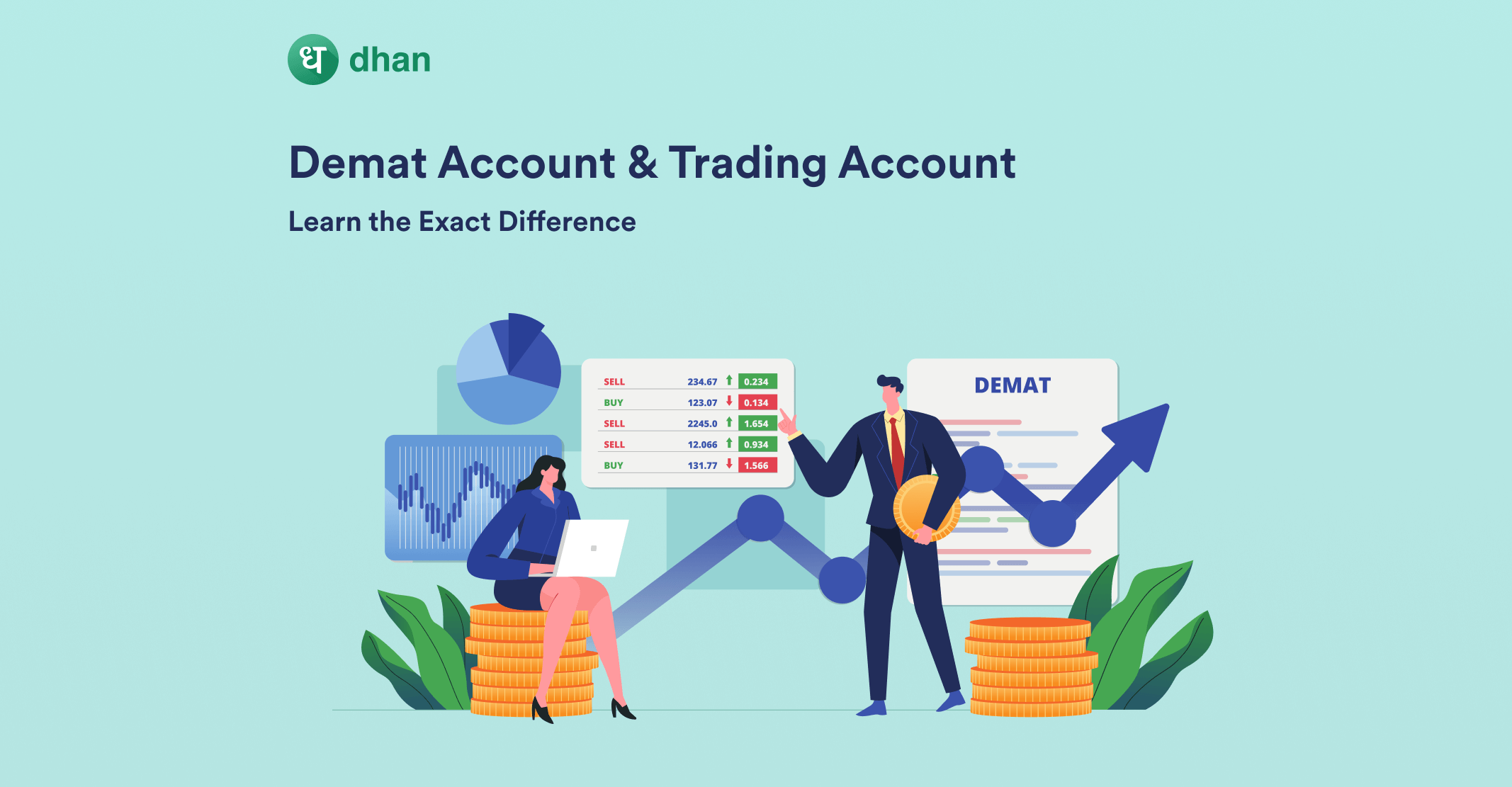If you are an investor or plan to venture into online investing in the stock market, to have Trading Accounts or open Demat Accounts is essential in the starter pack of stock market trading. In the earlier days of the stock market, buyers and sellers had to be physically present at the stock exchange to trade. The buyer purchased shares physically by taking their share certificates from the seller for cash in return whenever the quoted price matched. This cumbersome physical process came to an end in 1996 when SEBI introduced Demat Account and made everything entirely digital as you see it in today’s age. In this article we will compare Demat Account vs Trading account – and explain you the exact difference and few takeaways before you start investing.
What is a Demat Account?
The conversion of physical shares into electronic format is called Dematerialization. A Dematerialization account, or a Demat Account, eliminates the risk of storing physical shares in an electronic format. Two organizations in India maintain Demat Accounts – NSDL and CDSL – and they are called depositories. You can open online Demat account easily with any depository participant.
What is a Trading Account?
Whenever you want to trade any security in the market, you need an account. This is called the Trading Account. The Trading Account lets you buy and sell shares. For example, you can place a buy order of 500 shares of an XYZ company or a sell order of 200 shares of an ABC company through your Trading Account. The Trading Account is linked to your bank account to deposit cash in your Trading Account for these transactions.
Though the transaction of these shares can be done through a Trading Account, the delivery of the shares happens only in the Demat Account. The Trading Account acts as a link between the bank and your Demat Account.
Demat Account vs Trading Account – The Difference
- Main Role: A Demat Account ensures the safe and smooth storing of the investor’s shares, whereas a Trading Account carries out the buying and selling transactions.
- Unique Identification: Every Demat Account has a unique Demat number by which one can identify your account. Every share in your Demat Account also has its unique ISIN number by which you can verify the shares and their number in your account. The Trading Account also has a unique number used to buy and sell shares in the market.
- Functionality: A Demat Account can store multiple financial instruments such as equity shares, government securities, ETFs, and mutual funds. The Trading Account does not store any securities; it instead buys and sells them in the market.
- Execution Period: When a trade gets executed after a buy and sell order matches, the money is immediately transferred from the buyer’s account to the seller’s account. The seller’s Demat Account shares get delivered to the buyer’s Demat Account in a T+2 settlement cycle.
Takeaway
Now that you know the difference between a Demat and a Trading Account, you understand that you must have both these accounts to trade in the stock market. If you don’t have a Demat Account, you can open one with a few clicks.
After opening your accounts and conducting your market research, you are ready to start your online investing journey.
Here are 5 factors to keep in mind before opening a Demat account.
Happy Investing 😇
Disclaimer: This blog is not to be construed as investment advice. Trading and investing in the securities market carries risk. Please do your own due diligence or consult a trained financial professional before investing.




Comments are closed.